Eleuterio F. Toro9783540659662, 3-540-65966-8
Table of contents :
Front Matter……Page 1
References……Page 0
Preface……Page 3
Acknowledgements……Page 6
Preface to the Second Edition……Page 8
Table of Contents……Page 9
1. The Equations of Fluid Dynamics……Page 18
1.1 The Euler Equations……Page 19
1.1.1 Conservation-Law Form……Page 20
1.1.2 Other Compact Forms……Page 21
1.2.1 Units of Measure……Page 22
1.2.2 Equations of State (EOS)……Page 23
1.2.3 Other Variables and Relations……Page 24
1.2.4 Ideal Gases……Page 28
1.2.5 Covolume and van der Waal Gases……Page 30
1.3 Viscous Stresses……Page 32
1.4 Heat Conduction……Page 34
1.5 Integral Form of the Equations……Page 35
1.5.1 Time Derivatives……Page 36
1.5.2 Conservation of Mass……Page 37
1.5.3 Conservation of Momentum……Page 38
1.5.4 Conservation of Energy……Page 40
1.6.1 Summary of the Equations……Page 42
1.6.2 Flow with Area Variation……Page 44
1.6.3 Axi-Symmetric Flows……Page 45
1.6.5 Plain One-Dimensional Flow……Page 46
1.6.6 Steady Compressible Flow……Page 49
1.6.8 Free-Surface Gravity Flow……Page 50
1.6.9 The Shallow Water Equations……Page 52
1.6.10 Incompressible Viscous Flow……Page 55
1.6.11 The Artificial Compressibility Equations……Page 56
2.1 Quasi-Linear Equations: Basic Concepts……Page 58
2.2.1 Characteristics and the General Solution……Page 64
2.2.2 The Riemann Problem……Page 66
2.3 Linear Hyperbolic Systems……Page 67
2.3.1 Diagonalisation and Characteristic Variables……Page 68
2.3.2 The General Initial-Value Problem……Page 69
2.3.3 The Riemann Problem……Page 72
2.3.4 The Riemann Problem for Linearised Gas Dynamics……Page 75
2.3.5 Some Useful Definitions……Page 76
2.4 Conservation Laws……Page 77
2.4.1 Integral Forms of Conservation Laws……Page 78
2.4.2 Non-Linearities and Shock Formation……Page 82
2.4.3 Characteristic Fields……Page 93
2.4.4 Elementary-Wave Solutions of the Riemann Problem……Page 100
3.1.1 Conservative Formulation……Page 103
3.1.2 Non-Conservative Formulations……Page 107
3.1.3 Elementary Wave Solutions of the Riemann Problem……Page 110
3.2 Multi-Dimensional Euler Equations……Page 118
3.2.1 Two-Dimensional Equations in Conservative Form……Page 119
3.2.2 Three-Dimensional Equations in Conservative Form……Page 123
3.2.3 Three-Dimensional Primitive Variable Formulation……Page 124
3.2.4 The Split Three-Dimensional Riemann Problem……Page 126
3.3 Conservative versus Non-Conservative Formulations……Page 127
4. The Riemann Problem for the Euler Equations……Page 130
4.1 Solution Strategy……Page 131
4.2 Equations for Pressure and Particle Velocity……Page 134
4.2.1 Function f_L for a Left Shock……Page 135
4.2.2 Function f_L for Left Rarefaction……Page 137
4.2.3 Function f_R for a Right Shock……Page 138
4.2.4 Function f_R for a Right Rarefaction……Page 139
4.3.1 Behaviour of the Pressure Function……Page 140
4.3.2 Iterative Scheme for Finding the Pressure……Page 142
4.3.3 Numerical Tests……Page 144
4.4 The Complete Solution……Page 148
4.5 Sampling the Solution……Page 151
4.5.2 Right Side of Contact: S = x/t > u_*……Page 152
4.6 The Riemann Problem in the Presence of Vacuum……Page 153
4.6.1 Case 1: Vacuum Right State……Page 155
4.6.2 Case 2: Vacuum Left State……Page 156
4.6.3 Case 3: Generation of Vacuum……Page 157
4.7 The Riemann Problem for Covolume Gases……Page 158
4.7.1 Solution for Pressure and Particle Velocity……Page 159
4.7.3 The Complete Solution……Page 162
4.7.4 Solution inside Rarefactions……Page 163
4.8 The Split Multi-Dimensional Case……Page 164
4.9 FORTRAN Program for Exact Riemann Solver……Page 166
5.1 Discretisation: Introductory Concepts……Page 178
5.1.1 Approximation to Derivatives……Page 179
5.1.2 Finite Difference Approximation to a PDE……Page 180
5.2 Selected Difference Schemes……Page 182
5.2.1 The First Order Upwind Scheme……Page 183
5.2.2 Other Well-Known Schemes……Page 187
5.3 Conservative Methods……Page 189
5.3.1 Basic Definitions……Page 190
5.3.2 Godunov’s First-Order Upwind Method……Page 192
5.3.3 Godunov’s Method for Burgers’s Equation……Page 195
5.3.4 Conservative Form of Difference Schemes……Page 199
5.4 Upwind Schemes for Linear Systems……Page 202
5.4.1 The CIR Scheme……Page 203
5.4.2 Godunov’s Method……Page 205
5.5.1 Linear Advection……Page 208
5.5.2 The Inviscid Burgers Equation……Page 210
5.6 FORTRAN Program for Godunov’s Method……Page 211
6.1 Bases of Godunov’s Method……Page 228
6.2 The Godunov Scheme……Page 231
6.3 Godunov’s Method for the Euler Equations……Page 233
6.3.1 Evaluation of the Intercell Fluxes……Page 234
6.3.2 Time Step Size……Page 236
6.3.3 Boundary Conditions……Page 237
6.4 Numerical Results and Discussion……Page 240
6.4.1 Numerical Results for Godunov’s Method……Page 241
6.4.2 Numerical Results from Other Methods……Page 243
7.1 Introduction……Page 251
7.2 RCM on a Non-Staggered Grid……Page 252
7.2.1 The Scheme for Non-Linear Systems……Page 253
7.2.2 Boundary Conditions and the Time Step Size……Page 257
7.3.1 Review of the Lax-Friedrichs Scheme……Page 258
7.3.2 The Scheme……Page 259
7.4 The RCM on a Staggered Grid……Page 260
7.4.1 The Scheme for Non-Linear Systems……Page 261
7.4.2 A Deterministic First-Order Centred Scheme (FORCE)……Page 262
7.4.3 Analysis of the FORCE Scheme……Page 263
7.5.1 Van der Corput Pseudo-Random Numbers……Page 264
7.5.2 Statistical Properties……Page 266
7.5.3 Propagation of a Single Shock……Page 267
7.6 Numerical Results……Page 269
7.7 Concluding Remarks……Page 271
8.1 Introduction……Page 279
8.2.1 Upwind Differencing……Page 280
8.2.2 The FVS Approach……Page 282
8.3 FVS for the Isothermal Equations……Page 284
8.3.1 Split Fluxes……Page 285
8.3.2 FVS Numerical Schemes……Page 286
8.4.1 Recalling the Equations……Page 287
8.4.2 The Steger-Warming Splitting……Page 289
8.4.3 The van Leer Splitting……Page 290
8.4.4 The Liou-Steffen Scheme……Page 292
8.5.2 Results for Test 1……Page 294
8.5.4 Results for Test 3……Page 295
8.5.6 Results for Test 5……Page 296
9.1 Introduction……Page 306
9.2 The Riemann Problem and the Godunov Flux……Page 307
9.2.2 Sonic Rarefactions……Page 309
9.3 Primitive Variable Riemann Solvers (PVRS)……Page 310
9.4.1 A Two-Rarefaction Riemann Solver (TRRS)……Page 314
9.4.2 A Two-Shock Riemann Solver (TSRS)……Page 316
9.5.1 An Adaptive Iterative Riemann Solver (AIRS)……Page 317
9.5.2 An Adaptive Noniterative Riemann Solver (ANRS)……Page 318
9.6 Numerical Results……Page 319
10. The HLL and HLLC Riemann Solvers……Page 327
10.1 The Riemann Problem and the Godunov Flux……Page 328
10.2 The Riemann Problem and Integral Relations……Page 329
10.3 The HLL Approximate Riemann Solver……Page 331
10.4 The HLLC Approximate Riemann Solver……Page 333
10.5 Wave-Speed Estimates……Page 335
10.5.1 Direct Wave Speed Estimates……Page 336
10.5.2 Pressure-Velocity Based Wave Speed Estimates……Page 337
10.6.2 The Rusanov Flux……Page 339
10.7 Contact Waves and Passive Scalars……Page 340
10.8 Numerical Results……Page 341
10.9 Closing Remarks and Extensions……Page 343
11. The Riemann Solver of Roe……Page 352
11.1.1 The Exact Riemann Problem and the Godunov Flux……Page 353
11.1.2 Approximate Conservation Laws……Page 354
11.1.3 The Approximate Riemann Problem and the Intercell Flux……Page 356
11.2 The Original Roe Method……Page 358
11.2.1 The Isothermal Equations……Page 359
11.2.2 The Euler Equations……Page 361
11.3.1 The Approach……Page 365
11.3.2 The Isothermal Equations……Page 366
11.3.3 The Euler Equations……Page 370
11.4.1 The Entropy Problem……Page 373
11.4.2 The Harten-Hyman Entropy Fix……Page 374
11.4.3 The Speeds u_* , a_* L, a_* R……Page 377
11.5.1 The Tests……Page 378
11.5.2 The Results……Page 379
11.6 Extensions……Page 380
12. The Riemann Solver of Osher……Page 384
12.1.1 Mathematical Bases……Page 385
12.1.2 Osher’s Numerical Flux……Page 387
12.1.3 Osher’s Flux for the Single-Wave Case……Page 388
12.1.4 Osher’s Flux for the Inviscid Burgers Equation……Page 390
12.1.5 Osher’s Flux for the General Case……Page 391
12.2 Osher’s Flux for the Isothermal Equations……Page 392
12.2.1 Osher’s Flux with P-Ordering……Page 393
12.2.2 Osher’s Flux with O-Ordering……Page 396
12.3 Osher’s Scheme for the Euler Equations……Page 399
12.3.1 Osher’s Flux with P-Ordering……Page 400
12.3.2 Osher’s Flux with O-Ordering……Page 402
12.3.3 Remarks on Path Orderings……Page 407
12.3.4 The Split Three-Dimensional Case……Page 410
12.4 Numerical Results and Discussion……Page 411
12.5 Extensions……Page 412
13.1 Introduction……Page 419
13.2.1 Selected Schemes……Page 421
13.2.2 Accuracy……Page 423
13.2.3 Stability……Page 424
13.3.1 The Basic WAF Scheme……Page 426
13.3.2 Generalisations of the WAF Scheme……Page 429
13.4.1 Data Reconstruction……Page 432
13.4.2 The MUSCL-Hancock Method (MHM)……Page 435
13.4.3 The Piece-Wise Linear Method (PLM)……Page 438
13.4.4 The Generalised Riemann Problem (GRP) Method……Page 440
13.4.5 Slope-Limiter Centred (SLIC) Schemes……Page 442
13.4.7 Semi-Discrete Schemes……Page 445
13.4.8 Implicit Methods……Page 446
13.5.1 Monotone Schemes……Page 447
13.5.2 A Motivating Example……Page 450
13.5.3 Monotone Schemes and Godunov’s Theorem……Page 452
13.5.4 Spurious Oscillations and High Resolution……Page 455
13.5.5 Data Compatibility……Page 456
13.6.1 The Total Variation……Page 458
13.6.2 TVD and Monotonicity Preserving Schemes……Page 459
13.7.1 TVD Version of the WAF Method……Page 463
13.7.2 The General Flux-Limiter Approach……Page 470
13.7.3 TVD Upwind Flux Limiter Schemes……Page 475
13.7.4 TVD Centred Flux Limiter Schemes……Page 480
13.8.1 TVD Conditions……Page 486
13.8.2 Construction of TVD Slopes……Page 487
13.8.3 Slope Limiters……Page 489
13.8.4 Limited Slopes Obtained from Flux Limiters……Page 491
13.9.1 TVD Schemes in the Presence of Source Terms……Page 492
13.9.2 TVD Schemes in the Presence of Diffusion Terms……Page 493
13.10 Numerical Results for Linear Advection……Page 494
14.1 Introduction……Page 499
14.2 CFL and Boundary Conditions……Page 500
14.3.1 The Original Version of WAF……Page 502
14.3.2 A Weighted Average State Version……Page 504
14.3.3 Rarefactions in State Riemann Solvers……Page 505
14.3.4 TVD Version of WAF Schemes……Page 507
14.3.6 Summary of the WAF Method……Page 509
14.4.1 The Basic Scheme……Page 510
14.4.2 A Variant of the Scheme……Page 512
14.4.3 TVD Version of the Scheme……Page 513
14.4.4 Summary of the MUSCL-Hancock Method……Page 516
14.5.1 Review of the FORCE Flux……Page 517
14.5.2 A Flux Limiter Centred (FLIC) Scheme……Page 518
14.5.3 A Slope Limiter Centred (SLIC) Scheme……Page 520
14.6.1 Formulation of the Equations and Primitive Schemes……Page 521
14.6.2 A WAF-Type Primitive Variable Scheme……Page 523
14.6.3 A MUSCL-Hancock Primitive Scheme……Page 526
14.6.4 Adaptive Primitive-Conservative Schemes……Page 528
14.7.1 Upwind TVD Methods……Page 529
14.7.2 Centred TVD Methods……Page 530
15.1 Introduction……Page 536
15.2 Splitting for a Model Equation……Page 537
15.3.1 Model Equations……Page 540
15.3.2 Schemes for Systems……Page 541
15.4.1 First-Order Systems of ODEs……Page 542
15.4.2 Numerical Methods……Page 544
15.4.3 Implementation Details for Split Schemes……Page 545
15.5 Concluding Remarks……Page 546
16.1 Introduction……Page 548
16.2.1 Splitting for a Model Problem……Page 549
16.2.2 Splitting Schemes for Two-Dimensional Systems……Page 550
16.2.3 Splitting Schemes for Three-Dimensional Systems……Page 552
16.3.1 Handling the Sweeps by a Single Subroutine……Page 554
16.3.3 The Intercell Flux and the TVD Condition……Page 556
16.4.1 Introductory Concepts……Page 560
16.4.2 Accuracy and Stability of Multidimensional Schemes……Page 563
16.5 A MUSCL-Hancock Finite Volume Scheme……Page 566
16.6.1 Two-Dimensional Linear Advection……Page 568
16.6.2 Three-Dimensional Linear Advection……Page 572
16.6.3 Schemes for Two-Dimensional Nonlinear Systems……Page 575
16.6.4 Schemes for Three-Dimensional Nonlinear Systems……Page 578
16.7.1 Introduction……Page 579
16.7.2 General Domains and Coordinate Transformation……Page 580
16.7.3 The Finite Volume Method for Non-Cartesian Domains……Page 582
17.1 Explosions and Implosions……Page 589
17.1.1 Explosion Test in Two-Space Dimensions……Page 590
17.1.2 Implosion Test in Two Dimensions……Page 593
17.1.3 Explosion Test in Three Space Dimensions……Page 594
17.2 Shock Wave Reflection from Wedges……Page 595
17.2.1 Mach Number M_s = 1.7 and Phi= 25 Degrees……Page 596
17.2.2 Mach Number M_s = 1.2 and Phi = 30 Degrees……Page 599
18.1 Summary……Page 601
18.2.2 Steady Supersonic Euler Equations……Page 602
18.2.5 Compressible Materials……Page 603
18.2.8 Magnetohydrodynamics (MHD)……Page 604
18.3 NUMERICA……Page 605
References……Page 607
B……Page 628
C……Page 629
D……Page 631
F……Page 632
G……Page 633
I……Page 634
L……Page 636
N……Page 637
P……Page 638
R……Page 639
S……Page 640
T……Page 642
V……Page 643
W……Page 644
Z……Page 645


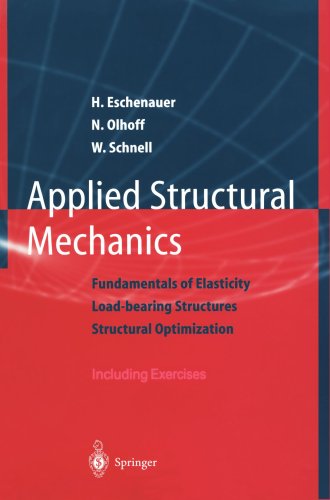
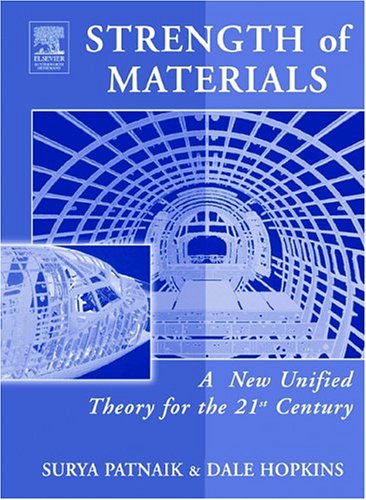
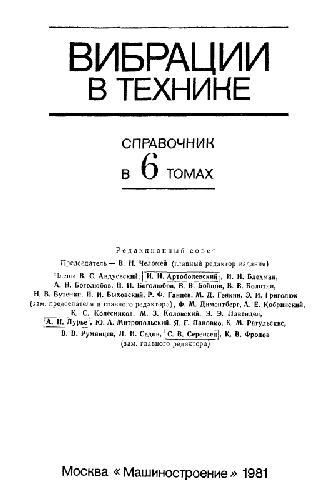
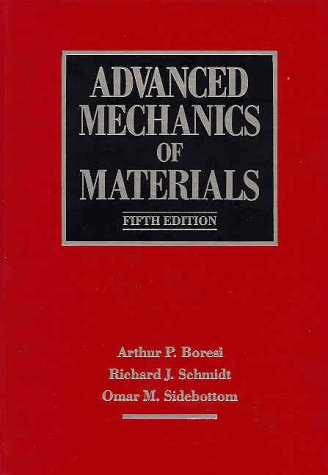
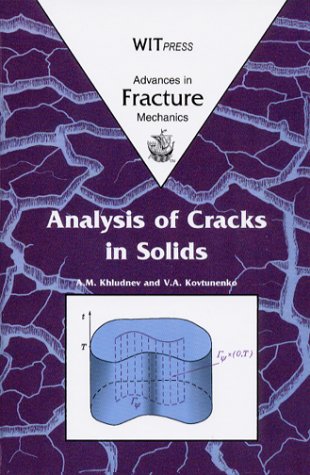
Reviews
There are no reviews yet.